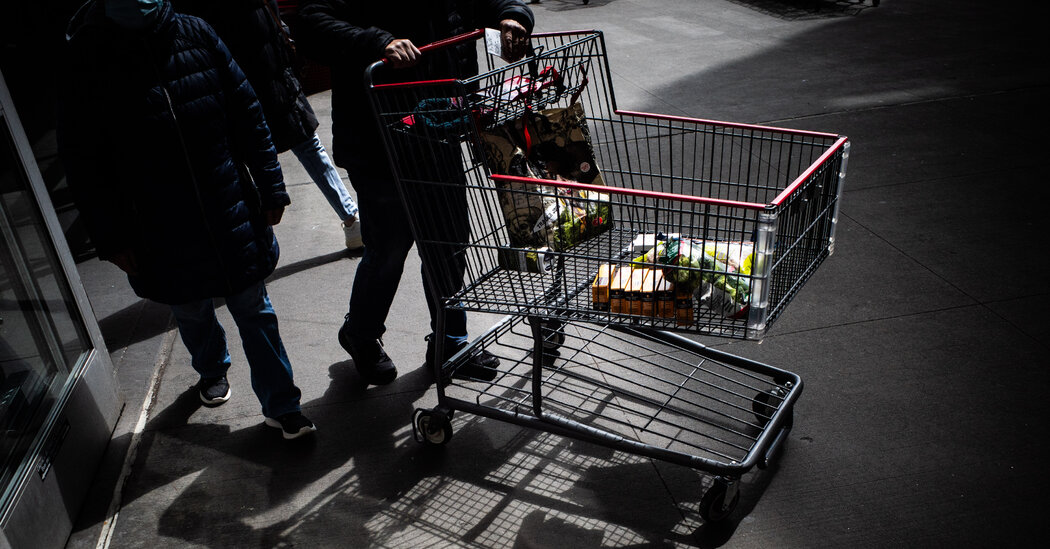U.S. inflation cooled slightly in April in what economists warn could be a final lull before a likely surge in consumer prices stemming from President Trump’s trade war.
The better-than-expected report is welcome news for the Trump administration and the Federal Reserve, which has been trying to wrestle inflation back down to its 2 percent target since the pandemic. But policymakers and economists do not expect the reprieve to last, forecasting prices to begin accelerating in the coming months as import taxes start to bite.
The Consumer Price Index rose 2.3 percent from a year earlier, the slowest annual pace since early 2021, data released by the Bureau of Labor Statistics showed on Tuesday. Over the course of the month, prices rose 0.2 percent, an acceleration compared to March’s 0.1 percent decline.
A closely watched measure of underlying inflation, which strips out volatile food and energy items, climbed 2.8 percent compared with the same time last year, in line with March’s year-over-year rise. On a monthly basis, prices rose 0.2 percent, slightly outpacing the previous month’s 0.1 percent increase.
Egg prices fell nearly 13 percent in April, which helped to pull down food-related costs by 0.1 percent for the month. Gas prices were down, too, falling 0.1 percent. Used car and truck prices fell 0.5 percent, while new vehicle prices were flat. Airfares dropped 2.8 percent, extending a 5.3 percent drop in March.
Furniture costs rose, however, alongside those for personal care services and motor vehicle insurance.
The data come on the heels of a significant U-turn from the Trump administration on its tariffs with China. On Monday, officials in Washington and Beijing agreed to temporarily reduce what had been punishing, tit-for-tat tariffs for 90 days.
The United States agreed to drop its tariffs on Chinese goods to 30 percent from the minimum 145 percent level that has been in place since last month. China reduced its tariff on American goods to 10 percent from 125 percent.
While the pause reduced the odds of a much more severe economic shock, economists and policymakers — including those at the Fed — have warned that the scope and scale of the tariffs that Mr. Trump is likely to keep in place will eventually stoke inflation while simultaneously denting growth.
A 10 percent tariff is still in place against nearly all of America’s trading partners and combined with the reduced duties on China, economists estimate that consumers still face an effective tariff rate of around 15 percent.
The full effects of these levies will take time to show up in the economic data, with the bulk of related price increases potentially not materializing until the summer.
There are many reasons for the delay. In anticipation of import taxes, many companies raced to build up inventories before the tariffs kicked in to avoid the higher costs. Companies — some of which have already been reluctant to raise prices in fear of driving away cash-strapped consumers — will be able to first draw down those stockpiles without having to sell new products at higher prices. Tariffs on intermediate goods, which are used to produce other products, also pass through to consumer items slowly.
What is not yet clear is if tariffs will cause just a one-time increase in prices or feed into a more persistent inflation problem. The Fed is worried about the latter scenario and has made clear that its priority for the time being is to ensure that expectations about inflation over a longer time horizon do not shift significantly higher.
The fear is that if consumers expect higher prices and ultimately demand higher wages to compensate for those increased costs, that could set in motion a period of significantly higher inflation that ultimately is harder for the Fed to root out.
The central bank has put interest rate cuts on hold for the time being until they gain more clarity about the economic impact of Mr. Trump’s policies. The bar to lower borrowing costs is high, suggesting officials will wait to see substantive signs that the labor market is in jeopardy before taking action.











